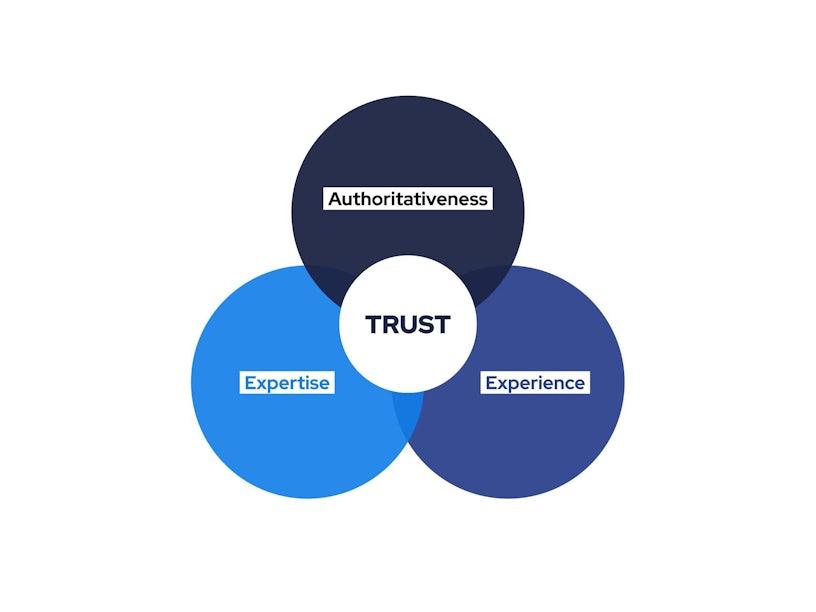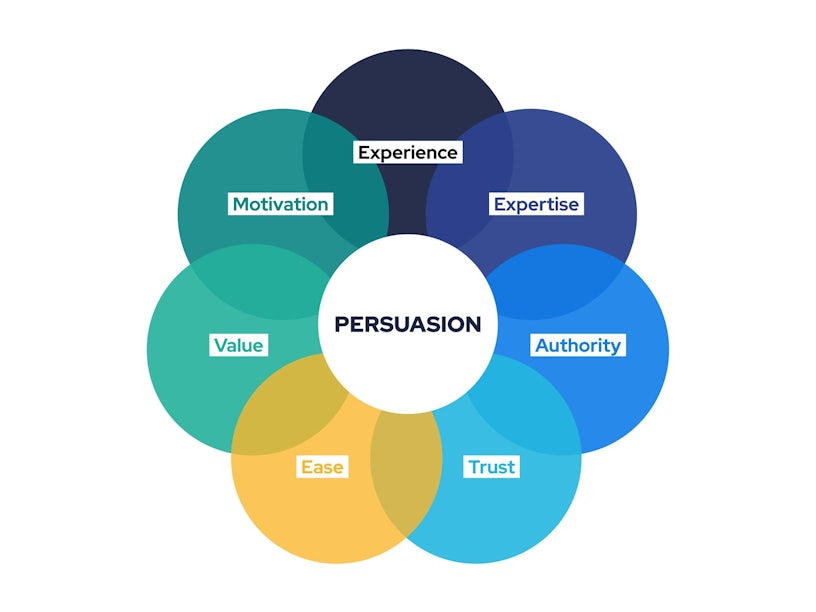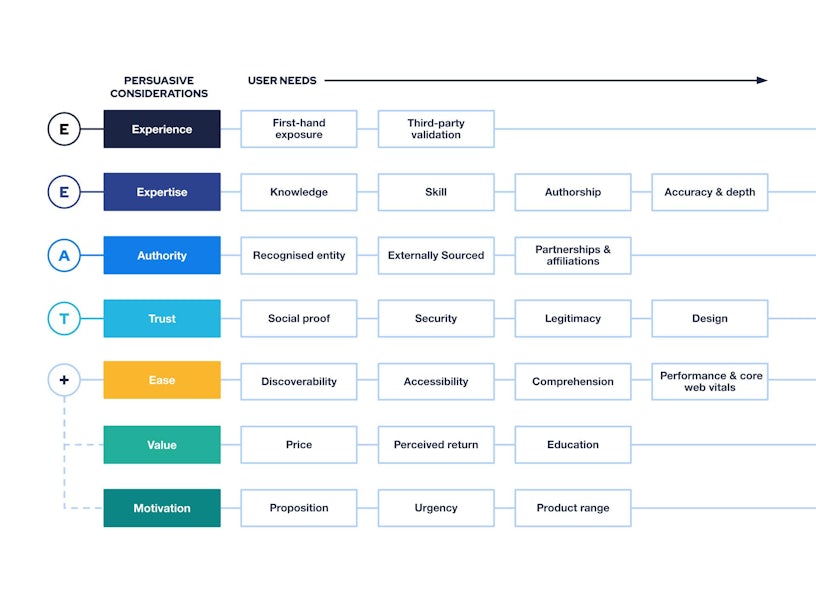Historically, getting SEO and CRO teams to align on strategy and agree on the needs of a website has been challenging for marketing and product teams alike. This is despite both of their motivations requiring user-centricity.
SEO tactics can easily sway towards influencing search engines only to build organic visibility, losing sight of user needs integral to modern algorithms and how you can use this knowledge to move customers along the journey. On the other hand, CRO tactics can lose sight of what acquired users to be on-site in the first place and the balance required to maintain this.
Over time, this can result in a siloed approach between SEO and CRO teams, meaning;
- Wasted resources: having differing goals and not sharing insights can lead to duplication or conflicting work and, therefore, unhappy stakeholders.
- Lost performance: Content which ranks well may not convert if the user experience lacks ease and persuasive design after clicks occur on SERPs. Conversely, a well-optimised page from a CRO perspective may not drive enough organic traffic.
- Unclear attribution: if both parties are changing experiences on-site simultaneously, it becomes difficult to ascertain whose efforts have contributed to which performance success.
What’s the solution?

Our aim is to bridge the gap by bringing the needs of SEO and CRO together with ComplE-E-A-T.
Building on the SEO principle of E-E-A-T (fig. 1.0), ComplE-E-A-T was created by realising the following two statements:
- E-E-A-T concerns user needs and building trust at its core. It’s therefore just as applicable to CRO strategy as it is to SEO strategy, due to the former’s inherent focus on persuading users and building trust with them
- If we accept that as true, we have to then recognise how there are also other user needs just as central to trust
Taking the above into account, we expanded considerations like Experience, Expertise, Authority and Trust to also include Ease, Value and Motivation. All of these considerations combined form what we’re now calling ComplE-E-A-T (fig 2.0), giving us a comprehensive overview of every critical user need required to ensure SEO and CRO success, and ultimately, total customer-centricity.

You’ll notice how we’ve placed Persuasion at the core of ComplE-E-A-T, as opposed to Trust which anchors Google’s E-E-A-T principle. This isn’t to diminish the importance of trust as a critical consideration, rather, we acknowledge this facet needs to ladder into persuasion. After all, everything we do as SEOs and CROs culminates in persuading users to take action, in order to showcase the returns on investments made across these disciplines.
This developed framework now allows teams to build a combined user-focused strategy to influence user behaviour. It provides them with a unified compass, meaning user research and SEO recommendations can be contextualised from the start of a strategy, to set a new benchmark for integrated excellence.
The ComplE-E-A-T Framework

The ComplE-E-A-T Framework (Figure 3.0) consists of 7 persuasive considerations, each containing relevant user needs specific to most facets of SEO and CRO, including content, technical SEO, link acquisition, brand building, user experience and behavioural science.
Keep reading to see the breakdown of these persuasive considerations and the user needs involved.
Experience

Experience should demonstrate how a brand or organisation has first-hand experience or direct involvement with the industry or subject matter. Experience is particularly important when considering content and how genuine exposure is communicated. This can also be reinforced by third-party validation, e.g. via customer reviews who have used products and services. Some considerations for experience are:
- How many years of proven experience do we have?
- What proven results or evidenced claims do we have?
- What third-party validation do we have or could we go after? (e.g. awards, accreditations, certifications, qualifications, legitimate customer reviews)
- Are we harnessing the above sufficiently in relevant content?
Expertise

Expertise relates to how a brand or organisation demonstrates proficiency in their field via their content. It links closely with Experience as it involves having the required knowledge or skill surrounding the topic at hand.
- How can we demonstrate our knowledge and skills on our website?
- How can we showcase expertise through our people? How well is this communicated, either indirectly by fact-checking content or directly via author pages and About Us pages?
- Is expertise communicated in a way that links to the customer’s pain points, showing a genuine understanding of their needs?
- Is content presented in a trustworthy way where it’s underpinned by expertise and accuracy?
- Do we give subject matter the correct depth to do it justice?
- If we’re showcasing facts or claims, how can this be verified by first-party research or third-party sources?
Authority

Authority covers the recognised and respected position an author, brand or organisation holds within its field online amongst users. Here’s how some of the considerations break down:
- How are we recognised by others? How widely known are we within the industry and outside of it as a go-to source?
- What is the sentiment behind our recognition?
- How are we mentioned and linked across the web? Can other authorities validate our authority?
- What partnerships and affiliations do we have, and what potential opportunities are there to develop our connectivity with other bodies across the industry we reside in?
- How do our users and target audience perceive us? How do we compare to competitors?
- What does our content architecture look like and how can we optimise it to showcase authority?
- Does our overall design convey authority? (e.g. visuals, information architecture, layout and navigation).
Trust

Trust builds on the foundations of expertise, experience and authority, signifying the confidence users have in your content. Though it is its own pillar, it can also be seen as a culmination of everything involved in ComplE-E-A-T, much like the idea of E-E-A-T.
Important aspects to consider when it comes to Trust are:
- How can we showcase social proof on our website? Do we have a competitive volume of good, legitimate reviews?
- Do we have case studies we can showcase to validate experience, expertise and authority?
- What security do we have in place to protect customers and provide peace of mind? This applies to both transactions, for when data is being exchanged, and information, for when advice is being provided.
- Does our information need to be fact-checked or verified in any way, and how can we showcase this?
- What customer care do we offer and how do we communicate this?
- How can we further showcase our legitimacy? Further considerations like social proofing, showcasing accreditation and certifications again apply here.
- Is our site’s design built in a way that inherently conveys trust?
Ease

Ease is a critical user consideration as it can help augment and contextualise your brand or organisation’s trust. See it as how effectively you’re putting other factors of ComplE-E-A-T into practice across your online presence as it should all output into a fluid user experience. When considering Ease, ask questions such as:
- Is valuable and unique content of ours crawlable and indexable by search engines and other relevant user-agents?
- What do the user journey flows look like, and is discovery fluid between different page content? Where are the drop off areas and why are these occurring?
- Do we meet accessibility guidelines for users? How easy is the site to use for anyone and everyone?
- Is our content clear, consistent and easy-to-use across all devices, viewports and browsers?
- Does the product/service meet the needs of the target customer? Are we communicating this clearly?
- Does core web vital data show competitive performance for our users? Is there anything here that’s disruptive or jarring to the journey?
- How easy is it to find our website through relevant external sources?
- How easy is it to find and search for content on the website?
- What are the key user journey points? What do we want them to do? Are we making this easy and intuitive for them?
- Do we have the tools in place to monitor and alert us when discoverability and accessibility are jeopardised?
- How easy is it to understand the information being presented? Is it believable?
- Is the content digestible and engaging?
Value

Value comes down to the perceived cost vs the return for the user. This isn’t just financial cost; time, effort and other personal investments should also be considered when evaluating value.
- How do we communicate pricing and is this competitive within the marketplace?
- Do we have offers, savings/bundling and finance options to increase value?
- How can we frame it to lower the perceived cost to the user?
- Does product/service content sufficiently explain how it solves user needs and problems?
- What are the additional benefits of purchasing or taking action with us? (e.g. free delivery, free content, no commitment, warranties, guarantees etc).
- What safety and reassurance measures and communications can we give users for their peace of mind? (This is particularly important in highly sensitive industries (YMYL), such as health and finance).
- What additional value can we give our users to educate them and build our brand? (E.g. knowledge, blogs, resources, post-purchase care and support).
Motivation

Motivation includes some of the core behavioural principles to help nudge and persuade users through the journey and towards taking a desired action in order to solve their problem.
Some key questions to ask when considering how persuasive your website is are:
- What is our position in the market, and how is this differentiated through our proposition and brand?
- Is our value proposition clearly stated, where customers can clearly see the benefits of engaging with us as an organisation and our products?
- What are our core values and how do we appropriately convey these on our website?
- What social responsibility initiatives do we undertake, if any, and how do we communicate these to show business for good?
- Are we prompting users to take action?
- Is our content easy to understand, readable and engaging?
- Is our proposition clear, with adequate information?
- How are we using urgency messages to persuade users?
- How are we using loss-aversion tactics?
- How much cognitive load is required to comprehend the information?
- Is our product range competitive amongst the market and how discoverable are these products?
- Do we offer supplementary products when appropriate, to enhance the experience of our users?
When to use ComplE-E-A-T
ComplE-E-A-T is designed to be used from the start of the optimisation journey, from auditing, research and hypothesis formation, to when strategy is being created and executed. It exists to contextualise this type of work, giving rationale to focus areas and why they’ve been effective. Let’s break these two stages down.
Research and analysis
ComplE-E-A-T is designed to apply to all areas of SEO and CRO research, though the lens shifts depending on the analysis conducted:
- Technical SEO analysis
- This work mainly operates around Trust and Ease, where components like security, discoverability, accessibility, user journeying (via internal linking) and core web vital performance are critical for technical SEO success.
- Content analysis
- As we’d expect, content has a further reaching remit across ComplE-E-A-T, where we could easily make the case that it’s applicable to all 7 persuasive considerations. Even beyond regular E-E-A-T, user needs within Ease, Value and Motivation are worth noting as it’s critical for content to be educational, easily comprehended, and highlight the perceived return of consuming your brand.
- Link analysis
- Link analysis exists to eventually heighten your Experience, Expertise and Authority, all in a bid to bolster Trust to users and search engines alike. However, it plays a hand in Ease too, where backlinks across relevant referring domains can increase the discoverability of your website via referral traffic.
- Customer behaviour analysis
- Using qualitative and quantitative research methods, ComplE-E-A-T now allows CROs to pinpoint all the considerations and needs that are effective when influencing user behaviour. All components of the framework are therefore applicable to this research. It’s particularly interesting to see just how significant the overlap is when we consider Google’s original principles of Experience, Expertise, Authority and Trust. It almost feels reductive considering this as an SEO-only concern when CRO can just as effectively influence these facets.
Strategy & execution
Once you’ve conducted your research and defined the opportunities and recommendations, ComplE-E-A-T can help to structure your strategy;
- You can use the ComplE-E-A-T guiding principles against test ideas and centring hypotheses.
- Bring your CRO and SEO teams together to understand the areas of focus for each team and the user needs behind these. It’s likely you have areas of crossover where you can benefit each other by working together, avoiding siloed work.
- Even after testing is complete, and SEO tactics have been deployed, you can use ComplE-E-A-T to understand where resources are being spent, and where more or less might be needed.
- You can also use ComplE-E-A-T to build a dashboard of how your experiments and optimisations perform against each principle. This will help you understand which persuasive consideration has been most impactful to performance, helping you forecast further where you should spend more effort as you mature.
The long-term use of ComplE-E-A-T
As your experimentation library expands over time and valuable insights will surface, you’ll see which principles are most frequently applied and which ones deliver the biggest wins. You can leverage this data to refine your hypotheses, building on past successes and avoiding past pitfalls. This knowledge, combined with the ComplE-E-A-T framework, empowers you to assess your organisation’s digital maturity. By pinpointing your strengths and weaknesses, you can chart a clear path towards a more mature and data-driven approach.






